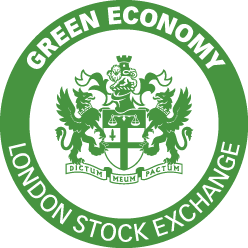Market overview
Attractive markets with long-term structural growth drivers

Key trend
Regulatory environment
Drivers
- Net zero targets require greater energy efficiency of buildings to reduce carbon emissions.
- EU taxonomy and the Green Deal supporting investment in deep refurbishment of buildings.
- Increasingly regular warm weather and improvements in insulation in modern air tight buildings leading to over heating during the summer months.
Opportunity
- Wider adoption of heat recovery ventilation solutions in buildings through tighter building regulations.
- Funding of renovations of buildings leading to sales of heat recovery devices in refurbishment.
- Energy efficient cooling solutions to be adopted in more of our geographies.
How are we responding?
- Innovation in both centralised and decentralised heat recovery product ranges and EC high efficiency motors.
- Capital allocation to new acquisitions improving our sales of heat recovery solutions.
- Development of wider integrated cooling solutions.
Key trend
Improving air quality for health
Drivers
- Strengthening regulatory tailwinds in refurbishment.
- Increasing landlord responsibility to provide acceptable standard of properties with prevention of mould and condensation a key focus area.
- Increased air tightness of buildings raises the risk of negative health outcomes unless adequate ventilation is ensured.
Opportunity
- Providing air quality solutions for existing buildings and applications where historically is has been difficult to retrofit products.
- Greater focus on ventilation provision for both new build and refurbishment applications across our geographies.
How are we responding?
- Development and launch of new product offerings including higher levels of efficiency, filtration and automation.
- Internationally we take an active role within our trade associations ensuring that regulators continue to consider ventilation when proposing legislative changes.
Key trend
Digital transformation
Drivers
- Many of our businesses operate in traditional markets with electrical wholesale as our primarily route to market. However, our channel to market is changing with increasing numbers of customer using e-business to procure our products.
- Our industry is digitising requiring more data for more performance metrics than ever before.
Opportunity
- Our products and services are being made available through a wider number of channels providing consumers and end users more flexible ways to procure our goods.
- IoT, Building Safety Act and embodied carbon are all areas enabling us to provide more insight and easier access to products, data and performance.
How are we responding?
- We continuously develop our sales model, utilise our brands and deploy our sales resources to ensure maximise our opportunities to trade as the sales channels evolve and strengthen barriers to entry for others.
- Improving the operability of our products across platforms as well as development of new data sets helping us differentiate our propositions.
Key trend
Macroeconomic factors
Drivers
- Cost of living crisis will increase the adoption of energy saving measures to buildings.
- The flow of money into upgrading of buildings through the European Green Deal and the Social Housing Decarbonisation Fund programmes will continue to support the adoption of our products to help save energy and improve air quality within the housing stock.
Opportunity
- Energy saving measures such as insulation, air tightness improvements and double glazing can require additional ventilation to prevent poor air quality.
- The wider adoption of higher value, continuous running and heat recovery products in refurbishment.
How are we responding?
- Increasing communications around the energy saving potential of heat recovery in retrofit.
- Ensuring that we internationalise our group products, particularly decentralised heat recovery solutions.
Key trend
Competitive landscape
Drivers
- Global supply chains have put pressure on suppliers of ventilation solutions across our geographies with stock availability becoming a far greater factor in procurement decisions.
- Backlog in refurbishment work due to Covid still providing opportunity. Particularly relevant in public RMI.
Opportunity
- Having stock available whilst others have not has ensured that we have maximised our opportunities to not only ensure we deliver excellent customer service to our existing customers but also attract new customers and take market share.
- Continued demand for ventilation products to service the backlog.
How are we responding?
- Increase stock levels across our organisation has ensured that we have maintained supply and buffered supply chain constraints. Capital investments have also been made to increase capacity to ensure that we continue to maximise the opportunities.
- Increased capacity on public housing product line.
